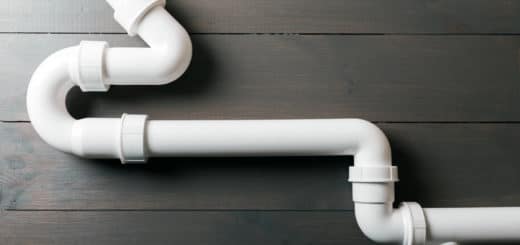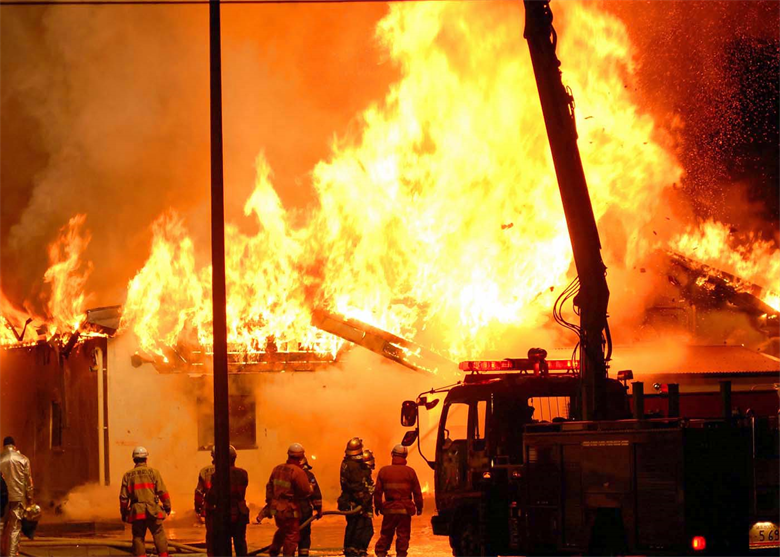What Does Water Damage Look Like? (And Other Ways to Detect It)
Water damage can be a silent threat, hiding behind walls and spreading underneath carpeting. The damage may not be evident until serious ruin has occurred. But spotting water damage in its earliest stages can prevent costly repairs. Here’s how to recognize water damage.

Water damage can emerge from numerous sources, some of which the homeowner cannot fully control. Natural floodingFlooding is the overflow or accumulation of water in areas t... More and severe rainstorms, for instance, can leadLead is a heavy metal that can be toxic to humans, especiall... More to indoor floods and extensive water damage. The structural damage that results can worsen if not handled immediately.
Other causes of water damage include the malfunctioning of appliances that use water. Refrigerators, dishwashers, water heaters, and washing machines can spring a leak and cause water damage to the surrounding floors. The affected wood will soon become warped and rotted.
Leaks are also responsible for water damage. A leak can begin in the roof, for example, and cause serious water damage to the interior parts of the home. Similarly, a leaky pipe will produce consistent moisture, which can in turn attract moldMold is a type of fungus that grows in damp or humid conditi... More colonies.
Experts say that 90 percent of property damage caused by moisture issues are preventable when homeowners actively and routinely inspect their homes for small problems. Minor water damage issues can quickly balloon into major ones if not discovered and repaired right away.
Homeowners who stay on top of routine home inspections and maintenanceMaintenance is the routine care, inspection, and repair of a... More can prevent costly water damage problems. Some instances of water damage are hidden or occur gradually and subtly. Consequently, spotting signs of water damage is not always straightforward—but rather tricky.
What are the visual signs of water damage?
- Water Stains
Dark spots on the walls, floors, or ceilings are indicative of water damage. These stains or discolorations appear without an obvious reason, indicating that an undetected water leak has occurred in the roof or walls. Discoloration may also occur in the corners where the walls meet the ceilings and floors.

- Paint Damage
The paint along the ceilings can reveal when water damage has occurred. Painted ceilings with water damage show cracks, bubbling, or flaking. Peeling paint is another visual warning sign of water damage. When drywall is affected by water damage, it produces the same symptoms.
- Pooling Water
Homeowners may discover a pool of water under a pipe. If the puddle of water returns after cleaning, it is a clear indication of a pipe leak. Similarly, pools of water elsewhere in the home that keep returning are signs of a leak and should be promptly repaired.
Moisture should not accumulate inside a home. When homeowners find wet surfaces, such as along countertops and walls, it means a water leak has developed nearby. Unexplained humidityHumidity is the amount of moisture or water vapor present in... More inside the home is another telltale sign of an undetected water leak.
What are other ways to detect water damage?
- Spike in Water Bill
While looking for visual signs of water damage is a prudent practice to maintain the home, other clues can point to water damage, as well. Noticing an unexplained spike in the water bill, for example, is oftentimes a major sign that hidden water damage has developed inside the property.
- Sounds of Rushing Water
A home may produce all sorts of sounds. One sound that homeowners should not expect to hear is running water. Hearing a dripping sound or the sound of rushing or running water suggests water damage. However, these sounds can occur within a functional system; so, check for changes in sound.
- MoldMold is a type of fungus that grows in damp or humid conditi... More Infestation
MoldMold is a type of fungus that grows in damp or humid conditi... More can develop within 24 to 48 hours after exposure to moisture. MoldMold is a type of fungus that grows in damp or humid conditi... More requires three nutrients to survive: water, organic materialsOrganic materials are derived from living organisms, such as... More, and oxygenOxygen is a chemical element essential for combustion and li... More. When moldMold is a type of fungus that grows in damp or humid conditi... More appears in places other than along the shower curtains in the bathroom, it means that the home has a moisture problem.

Sometimes moldMold is a type of fungus that grows in damp or humid conditi... More colonies can manifest where the moisture source is hidden. Water leaks behind the walls, for example, can trigger moldMold is a type of fungus that grows in damp or humid conditi... More growth in those areas; the homeowner may fail to realize the extent of water damage and moldMold is a type of fungus that grows in damp or humid conditi... More growth without professional intervention.
- Musty Smell
MoldMold is a type of fungus that grows in damp or humid conditi... More growth is accompanied by a musty smell, one that can be likened to dirty, wet socks. When excess water has been absorbed into porousPorous describes a material that contains small openings or ... More materials, like drywall, the musty odorAn odor is a smell, often detectable by the human nose, whic... More will appear. Walking into a room filled with this distinct odorAn odor is a smell, often detectable by the human nose, whic... More means dampness, water damage, and moldMold is a type of fungus that grows in damp or humid conditi... More have occurred.
- Health Problems
A subtle way to detect water damage is to evaluate the health of the home’s occupants. If they suddenly begin to experience respiratory issues, a water-induced moldMold is a type of fungus that grows in damp or humid conditi... More problem may be the culprit. Occupants may cough, wheeze, or suffer from watery eyes and scratchy skin. Asthma and allergies may worsen.
Water damage can be visually detected, heard or smelled. When your visual, auditory or olfactory senses detect water damage inside the home, take immediate action and consult water damage restoration experts.
Homeowners who call for professional services immediately upon noticing water damage typically see a reduction in their water damage claim. The quick response to your water damage emergency saves homeowners money and reduces the property losses that come with the spread of water damage.
Professional water damage cleanup procedures start with an assessment of the damage. Using advanced equipment, crews extract the excess moisture and set up dryingDrying is the process of removing moisture from materials, s... More equipment throughout the affected spaces. They remove moldMold is a type of fungus that grows in damp or humid conditi... More and apply an antimicrobial to eliminate waterborne bacteria.











